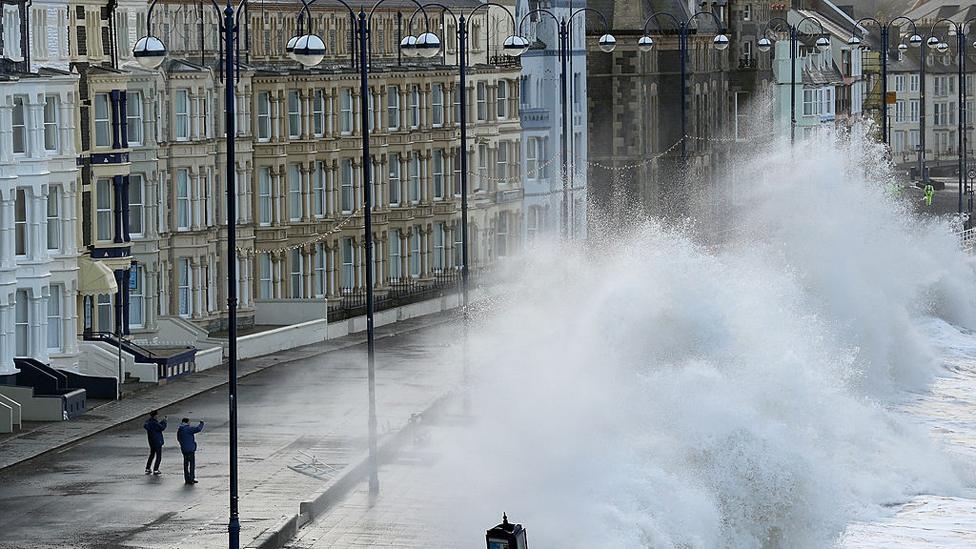Brecon Beacons landslips rise 'a clear climate change warning'
- Published
The landslips frequently turn the reservoir's water pink
Reservoirs in the Brecon Beacons are increasingly being polluted by landslides that have been described as a "dramatic" warning of climate change.
Extreme rainfall in recent years has led to an increase in the slips, the National Trust and Welsh Water said.
They result in the water being supplied to 1.5 million homes and businesses turning "rosé" pink and requiring additional treatment.
Thousands of trees are being planted to stabilise land near the reservoirs.
The pink-tinged water that may, on occasion, come out of the taps in thousands of homes that "looks like a mild rosé wine" is a tangible - and worrying - example of the impact global warming is already having on Wales, according to Keith Jones, the National Trust's adviser on climate change.
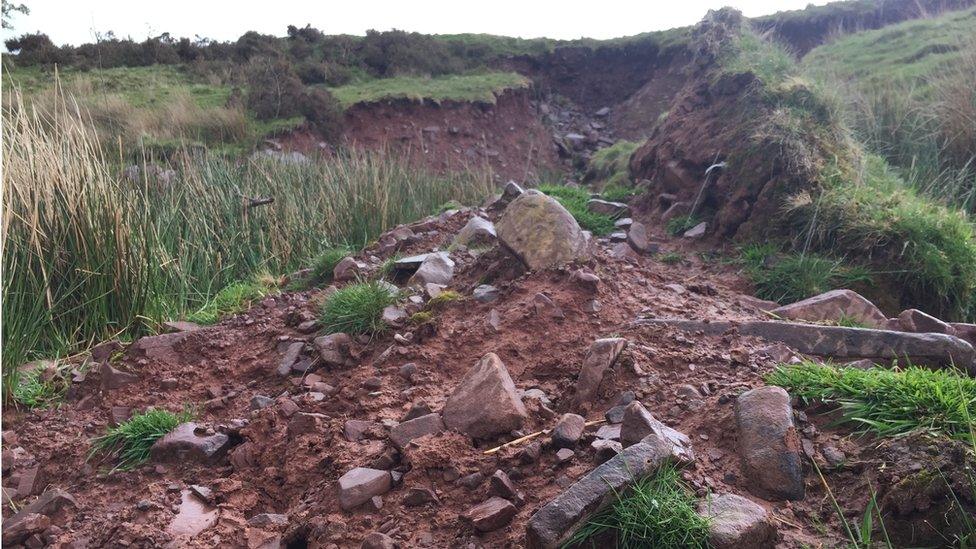
While not unusual, landslips in the Beacons have become increasingly regular
Standing in front of a giant, orange scar in the side of Cwm Crew valley in the southern Beacons, he points to the stream below which carries landslide debris into the nearby Cantref reservoir.
It supplies drinking water for Cardiff and parts of Swansea.
In total, the Brecon Beacons reservoirs supply 1.5m homes and businesses across south and mid Wales.
Landslips were never unusual on these steep-sided slopes, Mr Jones explains, but are now happening with increasing regularity.
A quick glance further up the valley towards the summit of Pen y Fan - the highest peak in south Wales - and two more are clearly visible, with a further "seven or eight" out of sight, he says.
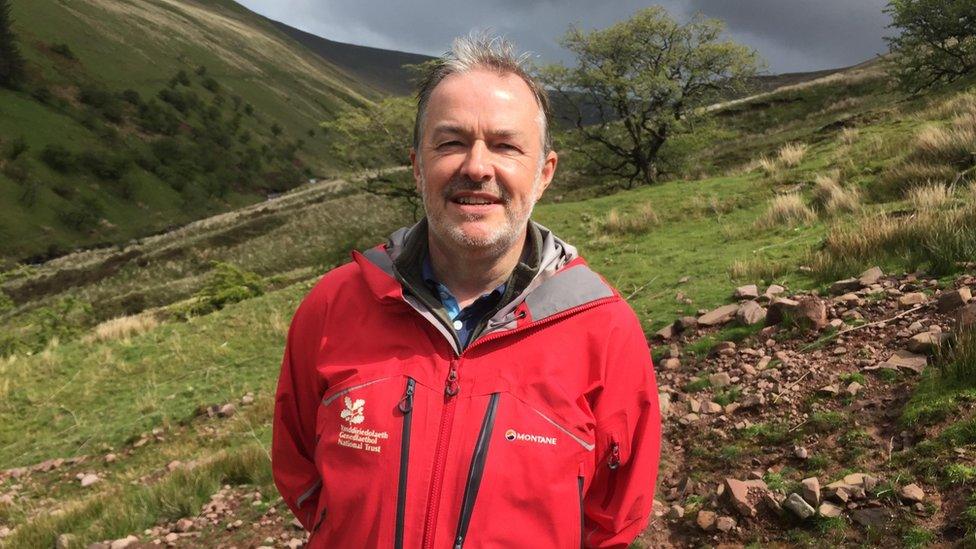
Keith Jones says the rise in landslips is a stark warning of global warming
"What we have here is an indicator of quite dramatic change - more rainfall in winter, less in summer and the combination of that is causing problems at a landscape scale.
"[Remember] that old saying about canaries in the mines sensing danger? To me these are the canaries on climate change and they're singing very loudly now."
The National Trust owns the land around five reservoirs in the Beacons and is now working with the national park authority, Natural Resources Wales and Welsh Water to tackle the problem.
This includes a pilot scheme to plant 9,000 willow trees on slopes deemed at high risk, to try to slow the flow of water when it rains and prevent soil slipping away.

Fast-flowing water pushes soil into the water courses

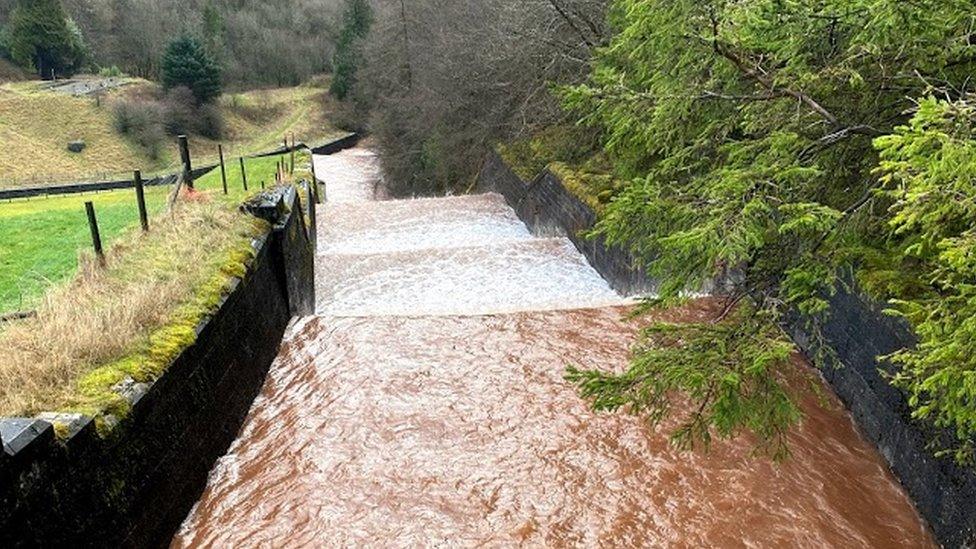
Fine particles of sandstone washed into streams or reservoirs by landslides discolour the water
Down at the reservoir itself Philippa Pearson, head of water services science at Welsh Water, agrees changes in the climate, particularly more intense rainfall events, are to blame.
"Whereas in the past we would have seen [landslides] just in the winter months, now they're all year round," she says.
The most severe slips have required Welsh Water to temporarily close their treatment works at Cantref and use "more chemicals and energy" to clean the water of the red sandstone.
Having worked with researchers at Aberystwyth University to map out the high-risk areas, she said the company was keen to explore nature-based solutions like tree-planting.
"We could change our treatment works and build more sophisticated processes, but we feel it is right to try and tackle the problem at source and make our landscapes more resilient so we are able to face threats like climate change in the future," said Dr Pearson.
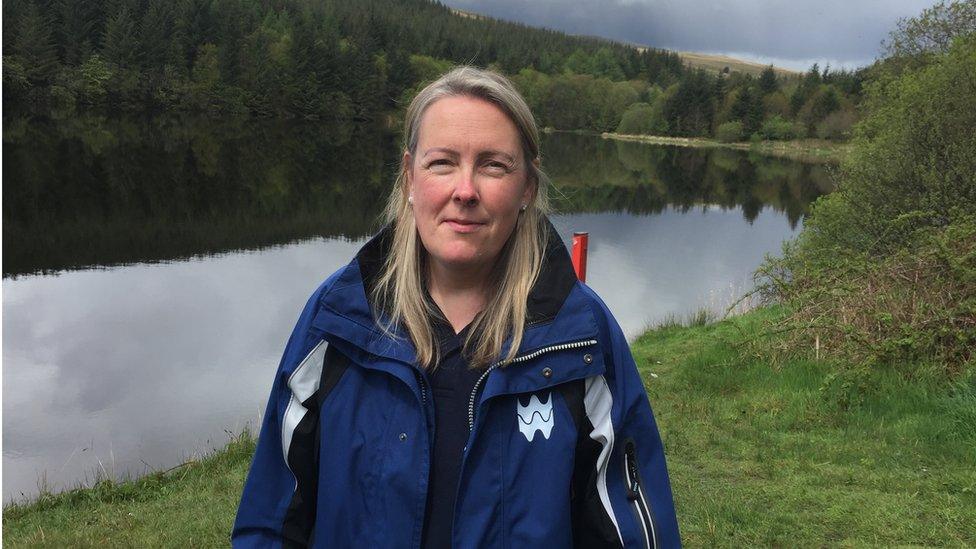
Philippa Pearson says Welsh Water is keen to look for "nature-based" solutions
The National Trust, which has described climate change as the "single biggest threat" to the land and properties it cares for, has also spent a year mapping looming hazards across Wales.
The research shows the Brecon Beacons getting warmer and wetter - both increasing the risk of landslides - and is among the most high-risk areas.
Elsewhere, flooding, coastal erosion, wildfires and drought conditions also pose significant threats.
"We've brought as much data and information together as possible to see what 2050 looks like and it's not a good place," Mr Jones concludes.
"If we cut our carbon today and in the coming years, it doesn't have to be. We're planning for the worst, hoping for the best.
"Even though it presents quite a challenge, I still get to wake up in the morning and think we're doing something about it."
- Published19 May 2021

- Published18 May 2021

- Published19 April 2021
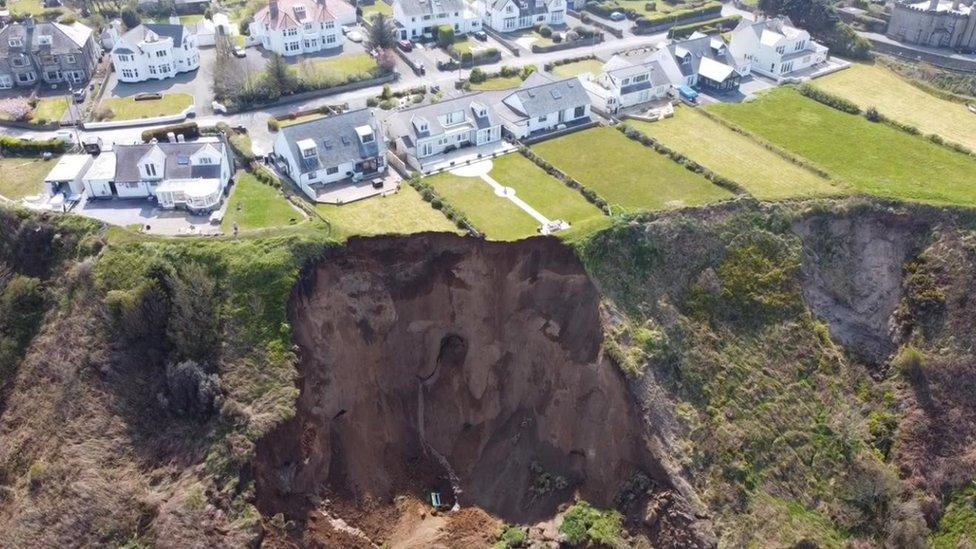
- Published18 February 2020
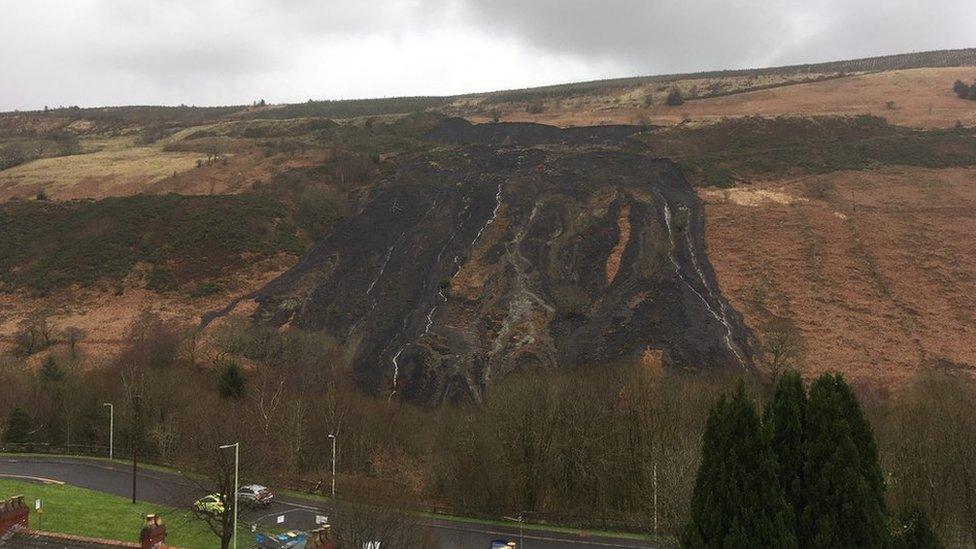
- Published15 April 2021
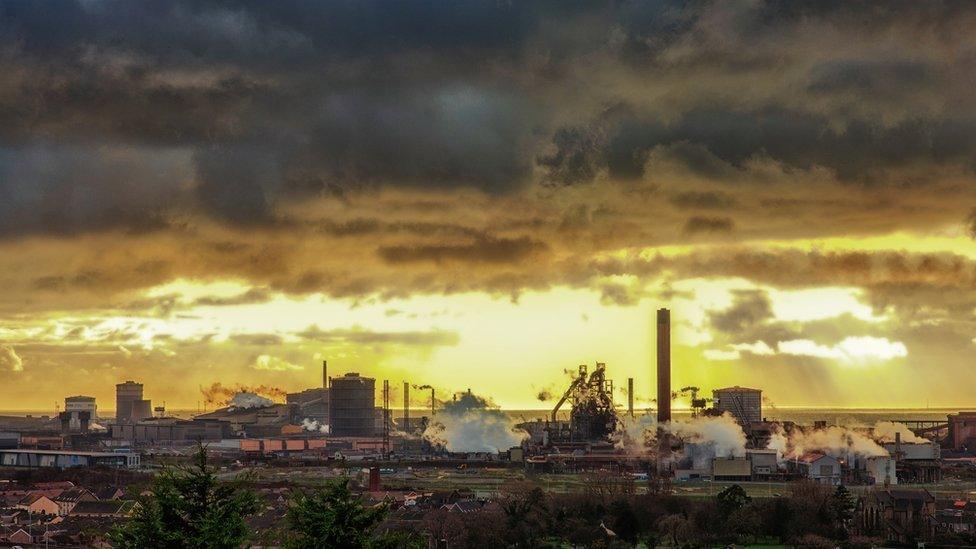
- Published29 March 2021
